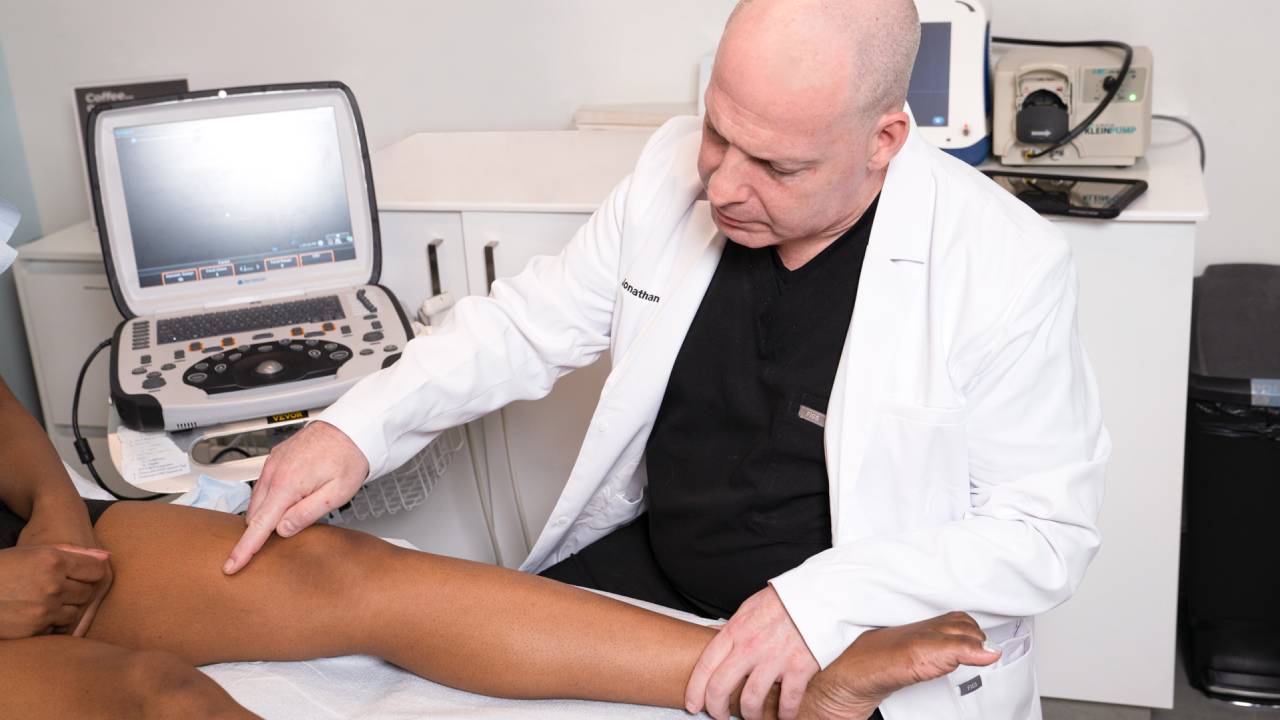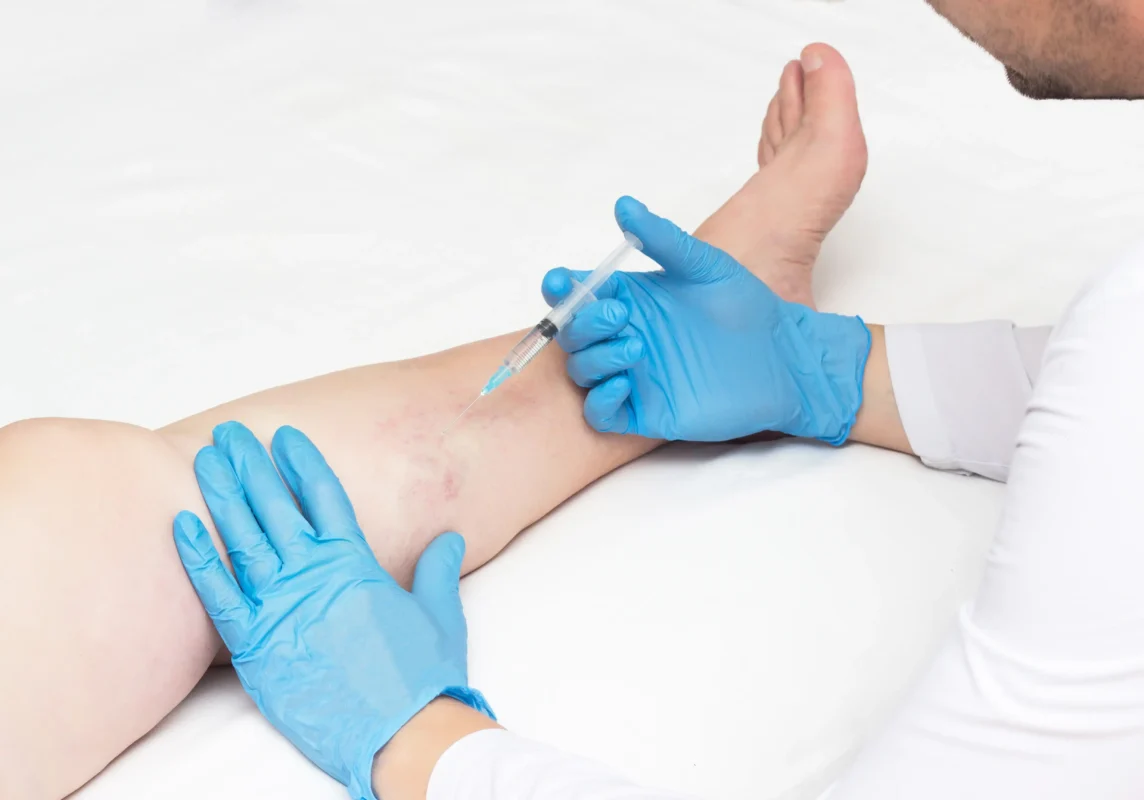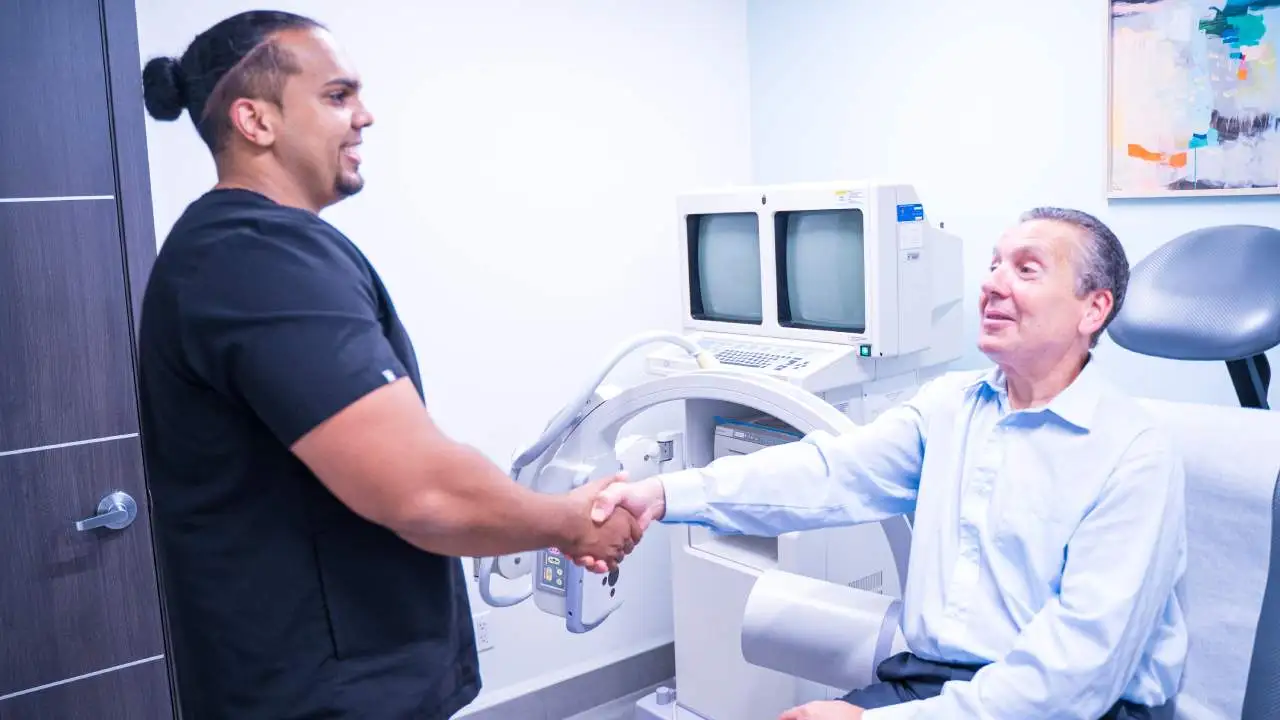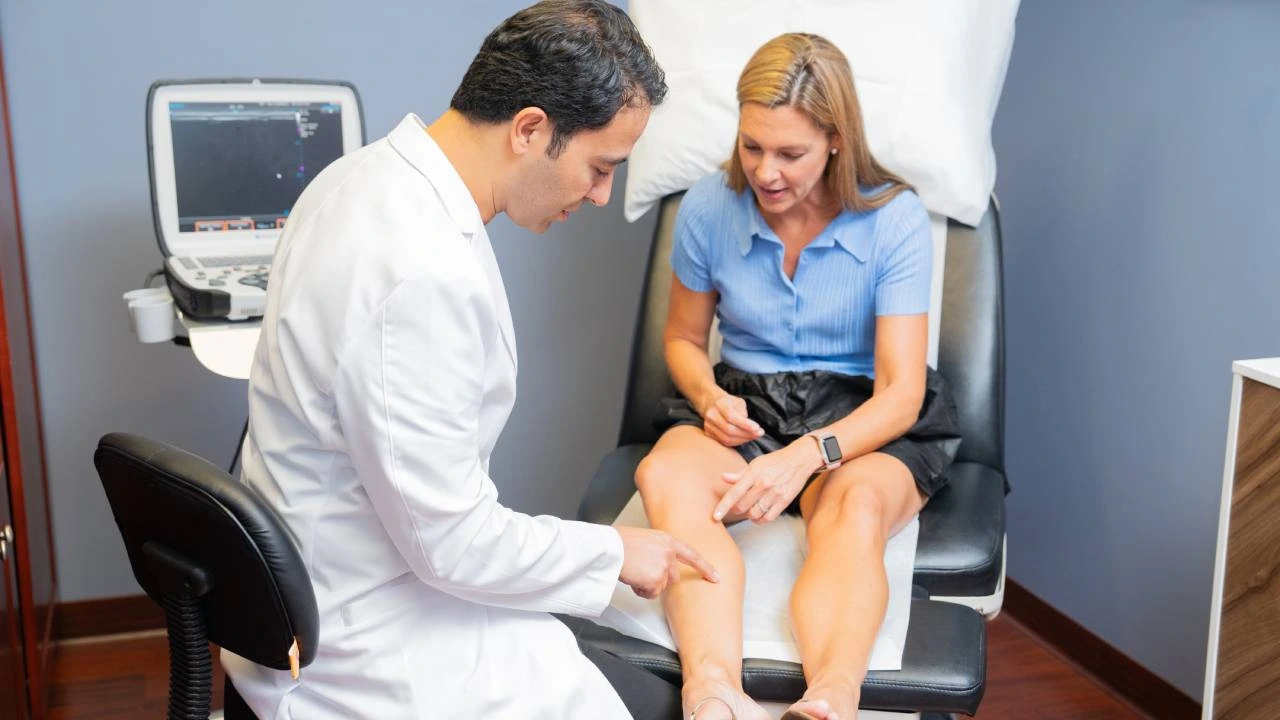You’re getting ready for a day at the beach, slipping into your favorite swimsuit, when you notice a cluster of thin, web-like veins sprawling across your legs. While these spider veins might seem like a minor cosmetic issue, their appearance could signal underlying health concerns. You might brush them off as a natural part of aging or simply as a cosmetic nuisance, but are you aware that leaving spider veins untreated can have significant health implications?
At Vein Treatment Clinic, we understand that spider veins on legs are more than just a cosmetic concern. Our team of board-certified vein doctors specializes in diagnosing and treating the root cause of spider veins to prevent more serious complications. In this article, we explore the consequences of ignoring spider veins and why timely treatment is crucial for your health.
The Connection Between Spider Veins and Venous Insufficiency
Spider veins on legs are often the visible manifestation of a condition known as chronic venous insufficiency. Venous insufficiency occurs when the valves in your veins malfunction, causing blood to pool and the veins to become enlarged. While spider veins may seem harmless at first, they can indicate that your veins are struggling to circulate blood effectively. This can lead to more severe venous conditions if left untreated.
If you notice spider veins on your legs, it’s essential to consider the possibility of underlying venous insufficiency. Early detection and treatment are key to preventing the progression of this condition. At Vein Treatment Clinic, we always perform a thorough evaluation, including a duplex ultrasound, to diagnose the root cause of your spider veins. If venous insufficiency is detected, we can tailor a treatment plan that addresses the issue at its core.
The Risk of Developing Varicose Veins
One of the most common consequences of untreated spider veins is the development of varicose veins. Varicose veins are larger, bulging veins that can cause discomfort, pain, and swelling in the legs. They occur when the weakened valves in your veins allow blood to flow backward, leading to increased pressure and the formation of these prominent veins.
If you already have spider veins, monitor your legs for signs of varicose veins. Symptoms to watch out for include aching or throbbing pain, swelling, and a feeling of heaviness in the legs. Varicose veins not only cause physical discomfort but can also lead to more serious health issues, such as venous ulcers and blood clots. At Vein Treatment Clinic, we offer minimally invasive varicose vein treatments to address this issue promptly.
Increased Risk of Leg Swelling and Discomfort
Spider veins may start as a cosmetic concern, but over time, they can lead to increased leg swelling and discomfort. When the veins in your legs are unable to efficiently return blood to the heart, fluid can accumulate in the tissues, causing your legs to swell. This swelling, known as edema, can be painful and can make it difficult to engage in daily activities.
Persistent leg swelling can also contribute to skin changes and the development of venous ulcers, which are open sores that can be challenging to heal. If you’re experiencing leg swelling along with spider veins, it’s a sign that your condition may be progressing. Seeking treatment early can help alleviate these symptoms and prevent further complications.
Potential for Blood Clots and Deep Vein Thrombosis (DVT)
One of the more serious consequences of untreated spider veins is the increased risk of blood clots. While spider veins themselves are not typically associated with blood clots, the underlying venous insufficiency can lead to conditions such as superficial thrombophlebitis (blood clots in superficial veins) and, in more severe cases, deep vein thrombosis (DVT).
DVT is a serious condition where blood clots form in the deeper veins of the legs, which can potentially travel to the lungs, causing a life-threatening pulmonary embolism. If you have spider veins on your legs, it’s crucial to be aware of the signs of blood clots, such as sudden swelling, pain, redness, and warmth in the affected leg. Prompt treatment of spider veins and underlying venous insufficiency can reduce your risk of developing these dangerous conditions.
Insurance Coverage for Spider Vein Treatment
Many people hesitate to seek treatment for spider veins, assuming that it’s purely cosmetic and won’t be covered by insurance. However, this is a common misconception. While spider veins themselves are often seen as a cosmetic issue, the treatment for their underlying cause, such as venous insufficiency, is typically covered by medical insurance.
At Vein Treatment Clinic, we work with your insurance provider to ensure that medically necessary treatments are covered. If you’re diagnosed with venous insufficiency, your spider vein treatment, including procedures like sclerotherapy, may also be covered.
When to Seek Treatment: Don’t Wait Until It’s Too Late
Spider veins on legs may not seem like a pressing concern, but they can be the first sign of a more serious venous condition. Ignoring them could lead to the development of varicose veins, leg swelling, and even blood clots. The good news is that early intervention can prevent these complications and improve your overall quality of life.
At Vein Treatment Clinic, our board-certified vein doctors are committed to providing personalized care tailored to your needs. We offer state-of-the-art, minimally invasive treatments that address both the cosmetic and medical aspects of spider veins. With locations across New York, Long Island, California, Maryland, and New Jersey, it’s easy to visit your nearest vein clinic and start your journey to healthier legs — schedule your consultation today.










